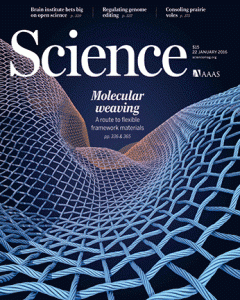 Prominent plant biologist Olivier Voinnet has issued three more corrections in this week’s issue of Science.
Prominent plant biologist Olivier Voinnet has issued three more corrections in this week’s issue of Science.
Collectively, the papers have earned more than 1400 citations, according to Thomson Scientific’s Web of Knowledge.
By our count, he’s now at 21 corrections and seven retractions, following months of questions about his work. He’s been the subject of an investigation that found he “breached his duty of care,” and another which found evidence of scientific misconduct.
One correction goes against the recommendation of the ETH Commission to retract the paper for “well documented intentional manipulations.” According to the correction note, the incorrect figures did not “alter the data in any material way that could be construed to benefit the results and their conclusions.” That correction is the only one of the three for which Voinnet takes full responsibility.
The other two corrections place the responsibility on Patrice Dunoyer, who works at The Centre National de la Recherche Scientifique (CNRS), and shares three retractions with Voinnet.
Here’s the correction for the paper that ETH recommended be retracted, which has been cited 445 times. The correction says, in part:
In the Research Article “Hierarchical action and inhibition of plant Dicer-like proteins in antiviral defense,” the following mistakes were made by Olivier Voinnet, the corresponding author, during the final stages of figure mounting. The original lab book data provided to the editors of Science showed that these errors did not alter the data in any material way that could be construed to benefit the results and their conclusions. Olivier Voinnet takes the full responsibility for the mistakes. All the authors have approved the following corrections and wish to apologize deeply for the inconvenience caused.
The correction note provides three corrected images for the paper. One figure contained a
mounting error in which a cognate siRNA panel (upper panel, comparing TRV-derived siRNA species in various rdr mutants) was mistakenly combined with the wrong viral RNA Northern blot and loading controls.
Another figure
did not depict the Northern blot intended for publication.
A third figure
was assembled with the wrong Northern blot.
Here’s the next paper that’s getting corrected, one of the two that Dunoyer takes responsibility for. The note says, in part:
In the Report “A plant miRNA contributes to antibacterial resistance by repressing auxin signaling,” a loading control panel in Fig. 2A was incorrectly assembled. The authors have retrieved the original small RNA blots with their cognate rRNA loading controls. The original data show that the Report’s biological conclusion (miR393 is induced in response to the active flagellin-derived peptide flg22) remains valid. Patrice Dunoyer, who assembled Fig. 2A, takes full responsibility for this mistake. The corrected figure panel and caption follow.
The correction note provides one corrected figure for that paper, which has been cited 733 times, designating it a “highly cited” paper.
Finally, we have the third correction for a paper that has already been corrected twice before. Here’s the latest note, in part:
In the Report “Small RNA duplexes function as mobile silencing signals between plant cells,” the following mistakes in Figs. 1E and 3A were made during the final stages of figure mounting. The original lab book data provided to the editors of Science showed that these errors did not alter the results and their conclusions. Patrice Dunoyer, who assembled the figures, takes full responsibility for these mistakes. The figures have been corrected in the PDF and HTML versions of the Report online.
For Figure 1E:
Figure 1E depicts @HA immunoprecipitation experiments performed on SUC:P19HA transgenic lines in the SUC:SUL RNAi reporter system. The published low–molecular-weight Northern blot depicted in this figure panel was inappropriately mounted with the wrong rRNA loading control, which was mistakenly reused from a previous publication [P. Dunoyer et al.,Nat. Genet. 39, 848 (2007)]. In addition, a divider should have been added to clearly indicate splicing of the original blot between the depicted “Total RNA” and “IP@HA” samples.
For figure 3A:
Figure 3A depicts @AGO1 immunoprecipitation experiments performed on SUC:P19HA or SUC:P19 transgenic lines in the SUC:SUL reporter system. The published low–molecular-weight Northern blot depicted in this figure panel (left side; SS, Suc-P19#10 samples) was inappropriately mounted with the wrong rRNA loading control. In addition, a divider should have been added to clearly indicate splicing of the original blots between the depicted “Total RNA” and “IP@AGO1” samples.
The paper has been cited 229 times.
Hat tip: Leonid Schneider and Anonymous
Like Retraction Watch? Consider making a tax-deductible contribution to support our growth. You can also follow us on Twitter, like us on Facebook, add us to your RSS reader, and sign up on our homepage for an email every time there’s a new post. Click here to review our Comments Policy.
According to a report in yesterday’s newspaper Voinnet’s funding has been stopped by the Swiss National Science Foundation and he cannot apply for funding for 3 years. What about the ERC?
Retraction #8:
http://science.sciencemag.org/content/354/6309/190.1
P. Dunoyer, G. Schott, C. Himber, D. Meyer, A. Takeda, J. C. Carrington, O. Voinnet, Science 328, 912 (2010).